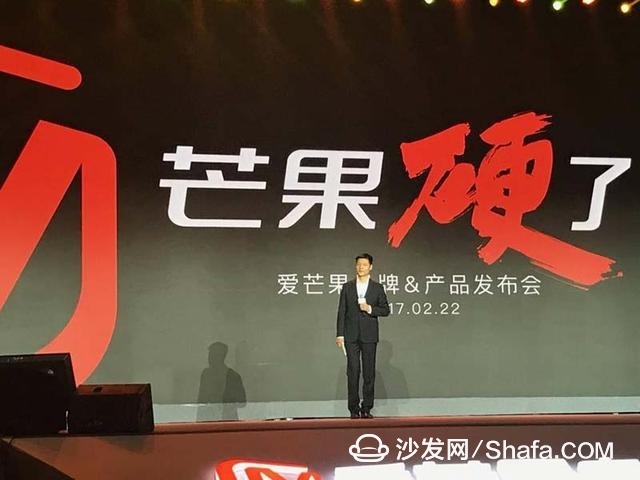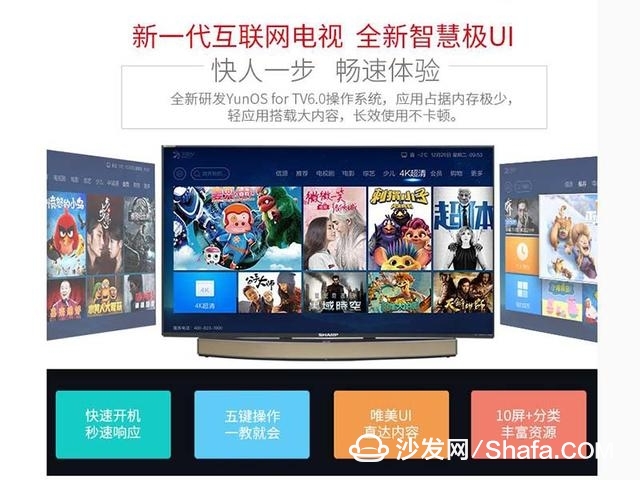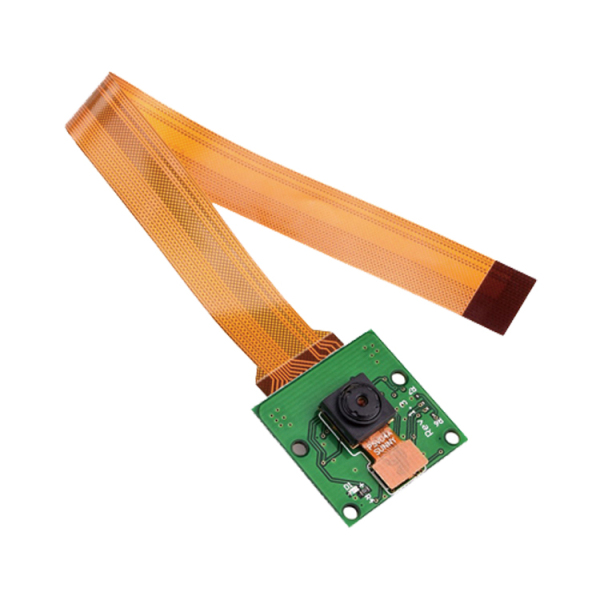According to statistics, in 2016 China's color TV sales volume has historically exceeded 50 million units, which is 50.89 million units, a year-on-year increase of 7.8%. The color TV market will continue to grow in 2017. It is expected that retail sales volume in China's color TV market will be scaled throughout the year. It will reach 53.10 million units, an increase of 4.2% year-on-year.
This fiercely competitive market still has enormous opportunities for many companies. In February 22th, Mango TV teamed up with Skyworth, Gome, and Everbright Optimisation Fund to release the “Love Mango†brand Internet TV and announced its official entry. Internet TV hardware market.

Looking at the extraordinary performance of the Internet TV brand in 2016, it relied on unique online social functions to give full play to the advantages of brand-to-user contact and created a number of exclusive “brand day†activities that effectively stimulated short-term sales performance. The data shows that in 2016, the retail volume of color cables reached 19.7 million units, accounting for 39%, an increase of 51.3% year-on-year.
However, with the return of consumers' consumption concepts to rationality, the demand for color TVs has also changed, and it has not only been led by a variety of promotional activities, but has also taken into account the hardware performance, and the hardware requirements have become higher and higher. With online sales returning flat, Internet TV brands want to rely solely on software to attract users. At the same time, the current Internet TV is under pressure from hardware costs, all of which have risen in price, and the original price advantage is shrinking.
Ding Cheng, chairman of Love Mango TV, who has just entered the television hardware industry, also said that although TV is the hardest thing to do in all of the entrance hardware. Therefore, Mango TV chose to cooperate with several companies such as China Everbright Fund, Skyworth and Gome to avoid excessive financial pressure.

Obviously, in terms of product competition, traditional TV brands have inherent technological advantages. For example, a hundred-year brand Sharp, focusing on LCD panels, its imaging technology compared with other brands have greater advantages, for consumers who want to buy new color TV, the first thought of brands naturally have Sharp LCD TVs. The data shows that the price increase of LCD TV panels in the second half of 2016 has exceeded 50%, which is a blow to Internet TV brands without hardware foundation. For traditional TV brands such as Sharp, which have excellent panel technology, it is a chance.
Taking Sharp as an example, it is understood that before the LCD TVs are delivered to users, they must go through nine “tortures†such as “high temperature, low temperature, high humidity, vibration, durability, drop, and lightning strikeâ€, and the product quality can be imagined. At present, the display technology and the Internet ecology flat-panel TV market have become the focus of competition. Sharp is also paying attention to the construction of the Internet ecology to adapt to the new trend of “content + Internet experience†in the color TV industry. Last year, Sharp released the 60-inch model Sharp Sharp LCD TV LCD-60TX85A, with extremely high product quality, such as Sharp's own ten-generation line panel, true RGB 4K, and the first smart TV that conforms to the ID Internet of Things international standard. The operating system Yun OS has been combined to gain wide industry attention.
In recent days, Sharp has turned a profit, and has raised his earnings twice. In the eyes of people in the industry, Sharp turns to a loss, symbolizing that he will be transformed from a bottle of oil from Hon Hai into a chicken mother. Hon Hai will not only reduce the burden of pressure, but will increase the space for future strategic operations. Sharp, with its technology and brand, will surely become Hon Hai’s transformation and expansion of the global layout is an important part of the game.
Internet TV brands still have opportunities, but their advantages are declining. The opportunities in the future of color TV market belong to truly technology-owned enterprises, and traditional TV brands are re-emerging.
What is a rigid-flex PCB?
Printed circuit boards can be divided into rigid printed boards and flexible printed boards according to their production materials. Rigid printed boards include phenolic paper laminates, epoxy paper laminates, polyester glass mat laminates and epoxy glass cloth laminates. The flexible printed circuit board is also called a flexible printed circuit board or FPC. The flexible circuit board is a circuit board with high reliability and high flexibility made of polyimide or polyester film. The circuit board has good heat dissipation, can be bent, folded, curled, and can be moved and stretched freely in a three-dimensional space. FPC can be used to reduce the volume, achieve lighter, miniaturized, and thinner, so as to realize the integration of components and wire connections. FPC is widely used in electronic computers, communications, aerospace, home appliances and other industries.
Features of flexible circuit board:
(1) FPC is small in size and light in weight.
(2) FPC can move, bend and twist.
(3) FPC has excellent electrical properties, dielectric properties and heat resistance.
(4) FPC has high assembly reliability and assembly operability.
(5) FPC can install three connections.
(6) FPC is conducive to thermal diffusion.
(7) Low cost.
(8) The continuity of processing.
Flexible circuit board product characteristics:
A flexible board is a printed circuit board made of a flexible insulating substrate and has many advantages that a rigid printed circuit board does not have.
The product is small in size and light in weight, greatly reducing the volume of the device, and is suitable for the needs of electronic products to develop in the direction of high density, miniaturization, light weight, thinness, and high reliability. It has high flexibility and can be freely bent, wound, twisted, folded and three-dimensional wiring. It can be arbitrarily arranged and changed according to the space layout requirements, and can be moved and expanded in a three-dimensional space to realize the integration of component assembly and wiring.
It has excellent electrical properties, high temperature resistance and flame retardant properties. Stable chemical changes, good stability and high reliability. It has higher assembly reliability, provides convenience for circuit design, can greatly reduce the assembly workload, and is easy to ensure the performance of the circuit, thereby reducing the cost of the whole machine. By using reinforcing materials to increase its strength, to obtain additional mechanical stability. The design of the combination of soft and hard also makes up for the slight deficiency of the flexible substrate in the load-bearing capacity of the component to a certain extent.

It can be high density. For more than one hundred years, with the improvement of integrated circuit integration and the progress of mounting technology, the high density of printed boards has been developed.
High reliability. Through a series of inspections, tests and aging tests, the PCB can work reliably for a long time (usually 20 years).
Can be designed. For PCB performance (electrical, physical, chemical, mechanical, etc.) requirements, printed board design can be achieved through design standardization, standardization, etc., with short time and high efficiency.
Manufacturability. With modern management, standardized, large-scale (quantitative) and automated production can be carried out to ensure the consistency of product quality.
Testability. A relatively complete test method, test standard, various test equipment and instruments have been established to test and evaluate the eligibility and service life of PCB products.

After electronic equipment adopts printed boards, due to the consistency of similar printed boards, manual wiring errors can be avoided, and Electronic Components can be automatically inserted or installed, automatic welding, automatic detection, ensuring the quality of electronic equipment, improving labor productivity, and reducing costs . Easy to maintain.

Rigid circuit boards and flexible circuit boards have both similarities and differences. For flexible circuit boards, rigid circuit boards are more widely used. Since rigid circuit boards appeared earlier, most of the design elements of rigid circuit boards have been applied to the design of flexible circuit boards. What is the difference between the flexible circuit board and the previous one?
1. The current-carrying capacity of the wire: Compared with the rigid circuit board, the flexible circuit board has poor heat dissipation performance, and sufficient line width must be provided. Due to the heat dissipation problem of the flexible circuit board, the additional width or
4 Layer Power Line Circuits,Power Line Circuits,Rigid Flex Pcb,Printed Circuit Board
HAODA ELECTRONIC CO.,LIMITED , https://www.pcbhdi.com